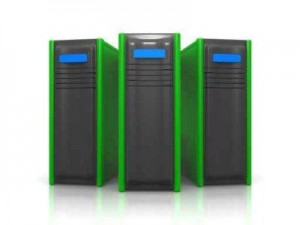Mavericks Push the Green Envelope
Power consumption and cooling may be concerns for all IT departments, but high performance computing (HPC) demands large amounts of both. It’s important to find the right environment for HPC projects, especially with pending environmental legislation.
Several IT departments are fighting to stay on top of costs and compliance for their traditional architectures, but some proactive businesses have been able to create new value opportunities. By taking advantage of green datacenter solutions, they are pushing more compute loads to the cloud, creating brand new products.
GigaOM held a webinar on Tue., April 23, entitled “Green HPC: how IT mavericks push the envelope with clean computing” to address these issues and show mavericks are staying on the cutting-edge of green HPC.
 The speakers for the webinar included Cormac Foster, research director, GigaOM Research; Dave Ohara, GigaOM Research analyst and founder, GreenM3; David Linthicum, CTO and founder, Blue Mountain Labs; and Tate Cantrell, CTO, Verne Global.
The speakers for the webinar included Cormac Foster, research director, GigaOM Research; Dave Ohara, GigaOM Research analyst and founder, GreenM3; David Linthicum, CTO and founder, Blue Mountain Labs; and Tate Cantrell, CTO, Verne Global.
According to David Linthicum, a maverick is “somebody who’s willing to shake things up and do some experimentation” as opposed to keeping the status quo. Mavericks disrupt, drive change and try new things. In this case, that involves finding better ways to run datacenters.
In today’s business world, CIOs have to do more with less. CEOs know IT solutions can drive additional revenue for companies, but they don’t want to increase spending to do that. A maverick can look for low cost solutions but also solutions that are already out there and dependable.
Companies are starting to look at the different types of computing in their organization, allowing them to figure out how best to optimize applications.
“The maverick is forward thinking, looking at new business models, where the future is and where things are going,” Ohara said. He also remarked that mavericks enable companies to generate new revenue by redefining what IT is doing, which helps everyone and can provide an eco boost.
HPC has been shifting towards massively parallel computing, where problems are broken up into smaller problems and solved in parallel. This batch computing is becoming tied more towards business intelligence. For example, this will help healthcare find better ways to treat patients, or a company examining swipes on mobile applications to gain business intelligence.
More and more, HPC is becoming the cost of doing business, especially as it leads companies towards predictive analytics. Processing power, distribution and management of different systems must be brought together to get big data to the point where it can be leveraged with real time and predictive analytics. Once a company finds the computer power, the right architectures and has a maverick that can rethink data, the demand for this information to run a business will increase.
One of the biggest obstacles to overcome is the cost of power consumption. As business analytics become more readily available, more energy will be used to analyze it, driving up the cost of power. In an environment where 25-40% of a datacenter’s cost is power consumption and there’s a 12-20% growth in energy costs, the ability to increase business analytics can potentially be inhibited.
“The first petabyte supercomputer, Roadrunner, was recently retired because it was using too much energy given the computing they got from it,” Ohara said.
With datacenters using more and more energy, governments have begun trying to regulate it. In Europe, companies are taxed based on carbon trading, which has deflated the price of carbon per ton from 31 Euros in 2008 to less than three Euros today.
Companies can also face unforeseen costs if they choose not to embrace green technology. Green Peace started protesting printer and PC manufacturers because of their energy use, and now has moved on to datacenters. Facebook became a target when they chose to power a datacenter with coal instead of the more expensive hydroelectric option. Once Green Peace raised public awareness, Facebook changed their policy. This potential public shaming has led companies to hire environmental executives who work with datacenters to increase sustainability.
Most companies are afraid of being called out on their datacenter’s power usage, especially since a lot of datacenters are inefficient. Some companies will use public relations to get ahead, but a negative article has the potential to cost a company business, whereas 15 years ago it would’ve had zero impact.
There are other advantages to utilizing green technology besides making the bottom of the shame list. The same things that require a company to be efficient require them to be green, so it’s better for them to talk about green and sustainable rather than efficiency. A company can also put up metrics for public view, making people aware of ways to be more energy efficient.
Green energy resources are also more inflation-resistant than fossil fuels. There’s been interest in green initiatives, even if some of the portfolios may not be doing well. Long-term these resources will reduce cost per kilowatt. Companies can look for solutions that work today while waiting for long-term solutions to come to fruition. This will make companies more competitive by passing costs down to consumers and making things more efficient.
“The nice thing about HPC is that it's something that can be analyzed and quantified to determine what is needed to make an impact on business,” Cantrell said. “But it only works if you have mavericks that can break up your business in ways that make sense.”
The main factor that is going to drive adoption of green energy is cost. As business continue to make decisions that are good business moving forward, the more green energy will have a positive impact on business.
Related Articles:
Green Revolution Powered by (Mineral) Oil
Making Datacenters Application Aware
Is a Zero-Watt Solution Worth the Wait?










